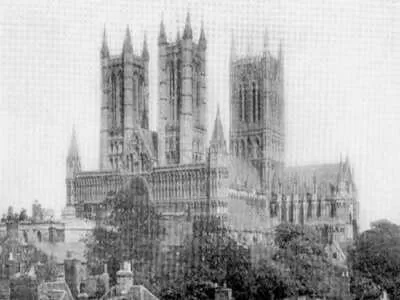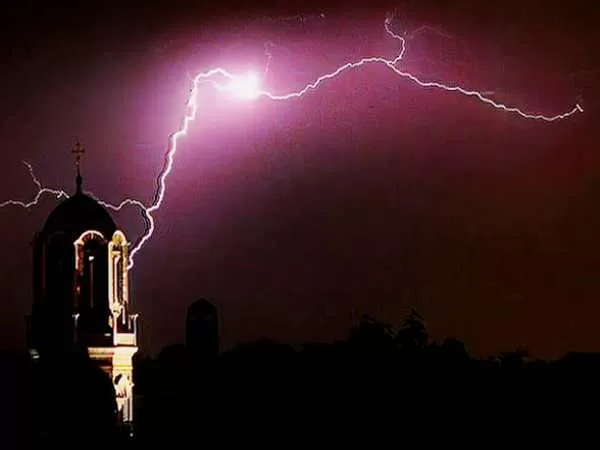In 2005, I embarked on an extensive investigation into an area of research that had previously eluded me: the Gothic Cathedral of Lincoln, England. To describe the Cathedral as simply magnificent is an understatement. It dominates the Lincoln skyline, visible up to thirty miles away, with its 271-foot central tower standing as England’s second tallest. This grandeur is reminiscent of the Tor at Glastonbury, which, shrouded in mist, appears to vanish like a spectral entity from Avalon—a fitting comparison, given that its Patron Saint, Hugh, hailed from Avalon in eastern France.
The Towering Legacy of Lincoln Cathedral
From the early 14th century until 1549, Lincoln Cathedral held the title of the tallest building in the world. It was the first structure to surpass the height of the Great Pyramid of Giza until its spire was toppled. My research led me to uncover what I termed the ‘Lincoln Cathedral Code,’ an exploration into its links with Rennes-le-Château, Mary Magdalene, and the Knights Templar. I initially thought my findings revealed a unique occult and mystical aspect of the Cathedral. However, I soon discovered that such notions were far from new.
Historical Notions of the Devil at Lincoln Cathedral
The first link between Lincoln Cathedral and the supernatural appeared in the “Lindsey and Lincolnshire Star” on May 21, 1898. The article “Lincoln Minster and the Devil” mentions that the association between the Devil and Lincoln Cathedral had become proverbial. A more erudite source, A.F. Kendrick’s 1928 publication “The Cathedral Church of Lincoln,” describes a grotesque figure atop the tall central lancet of the chapel, known as ‘the devil looking over Lincoln.’ The text notes that there is no satisfactory explanation for this figure’s origins and includes a curious legend that the Devil is supposedly still inside the Minster, terrified of being blown away.
Such bizarre tales provoke questions about how we should interpret references to the Devil today. In an era dominated by scientific reasoning, can we take these assertions seriously, or do they merely reflect historical fears and myths?
The Legend of the Lincoln Imp
One of the most famous legends associated with Lincoln Cathedral is that of the Lincoln Imp. According to the legend, the Devil sent an imp to wreak havoc in the Cathedral, only for the creature to be turned to stone by an angel. The story focuses on the imp, with no direct mention of the Devil himself. This legend highlights a recurring theme: the Cathedral’s link to the supernatural.
In South East Nottinghamshire’s Kinoulton village, there’s another tale involving a stone once situated in the old churchyard. This stone was believed to be a diabolic missile thrown from Lincoln Cathedral. Such stories typically reflect historical conflicts between early Christianity and paganism. Yet, this account’s focus on the Cathedral as the origin of the stone suggests a unique and intriguing connection.

The “Lucifer’s Eye” and Occult Associations
Further adding to the Cathedral’s mystique is its Rose Window, located on the North side, a departure from the traditional placement on the West. Known as ‘The Dean’s Eye,’ it also bears the lesser-known title of ‘Lucifer’s Eye.’ This positioning at the North—the region traditionally associated with darkness—serves as a ward against evil, contrasting with the ‘Bishop’s Eye’ on the sunny South side.
The term “Lucifer” in Latin means ‘morning star,’ and its association with the Cathedral deepens the intrigue. Just a short distance east of the Cathedral stands the public house ‘Morning Star,’ dating back to 1781, the same year the church housing my purported Templar treasure was demolished.
The Ark of Lucifer: An Enigmatic Tale
Among the most sensational claims is the existence of the ‘Ark of Lucifer,’ allegedly hidden within Lincoln Cathedral. According to a story circulating online, the Ark controls human lifespan through vibratory frequencies affecting DNA. The narrative suggests that during the 1920s, 144 individuals were aware of its existence, with only 12 possessing the true key to access it. The Ark was said to have been moved from St. Mary’s Church in Lincoln, causing a devastating fire in 1141 and an earthquake in 1185.
This dramatic tale describes a complex procedure for opening the Ark, involving a master key and a metallic grid. While the story reads like something out of an adventure novel, it reflects a recurring theme: Lincoln Cathedral’s association with dark forces and mystical secrets.
Esoteric Insights and Contemporary Perspectives
Richard Leviton’s 1991 article “A Précis of Albion” and his later work “The Emerald Modem” propose that Lincoln Cathedral sits on a significant energetic point, connected to a celestial being. According to Leviton, the Cathedral’s structure might serve as a black magic ritual to contain this being. Despite these esoteric interpretations, Leviton’s ideas offer a fascinating perspective on the Cathedral’s mystical reputation.
In 1995, the Sunday Times reported on an unusual dispute involving Lincoln Cathedral’s Dean, Rev. Brandon Jackson. Jackson, acquitted of misconduct, believed he was embroiled in a battle between good and evil. He requested an exorcism of the Cathedral, citing currents of conflict and evil. His claims were echoed by other clergy members, with some suggesting the Cathedral was located on ley-lines, further adding to its enigmatic reputation.
Conclusion: The Mystique of Lincoln Cathedral
Lincoln Cathedral’s blend of history, legend, and occult speculation forms a complex tapestry that continues to captivate imaginations. From the Devil’s supposed presence to the enigmatic Ark of Lucifer, the Cathedral stands as a focal point of mystery and intrigue. While some may dismiss these tales as fanciful or exaggerated, they contribute to the rich narrative surrounding one of England’s most remarkable Gothic structures.
As I reflect on my research and the diverse accounts of Lincoln Cathedral, I recognize that these stories—whether grounded in historical fact or shrouded in legend—highlight the Cathedral’s profound and enduring impact on those who encounter it.

